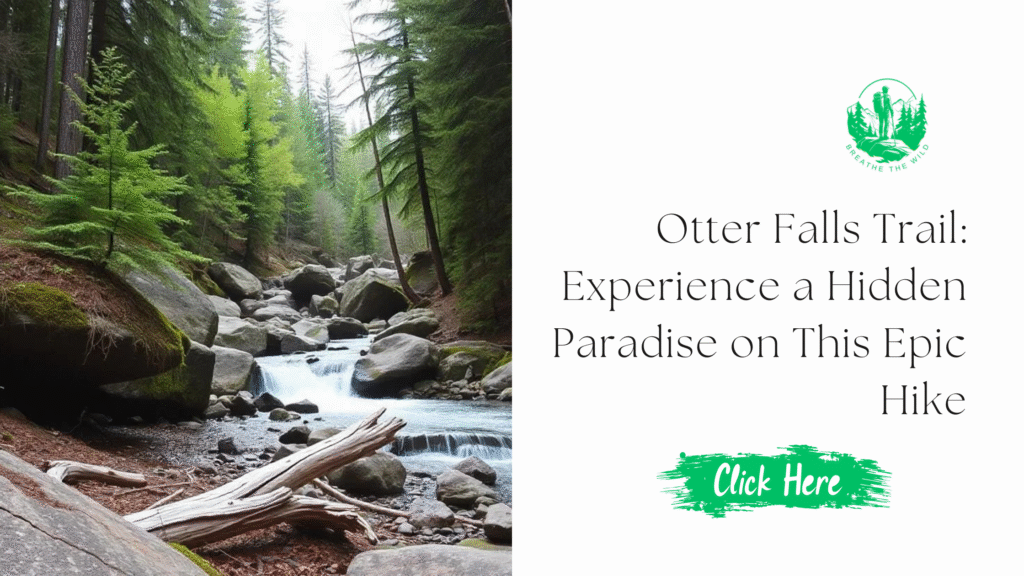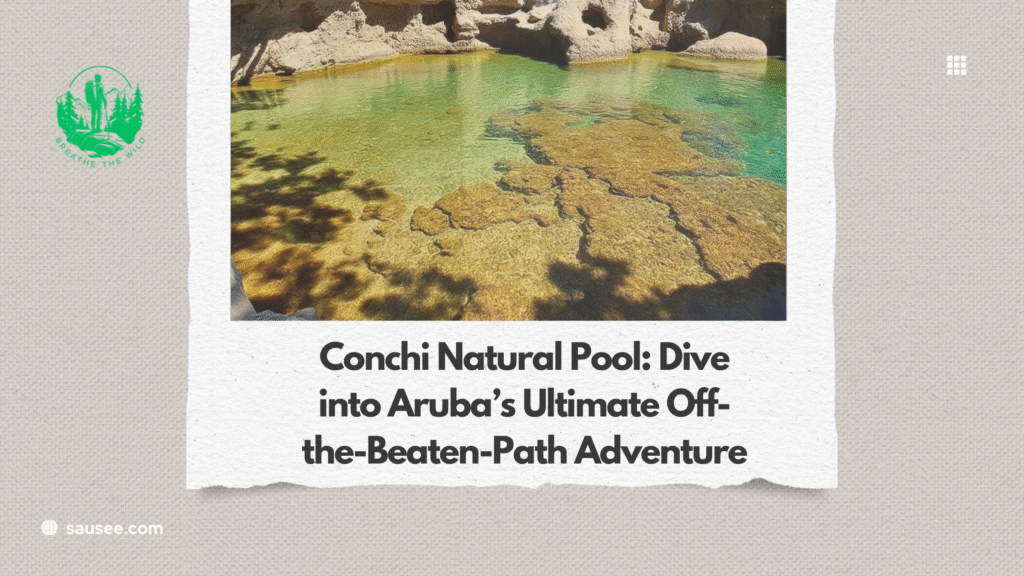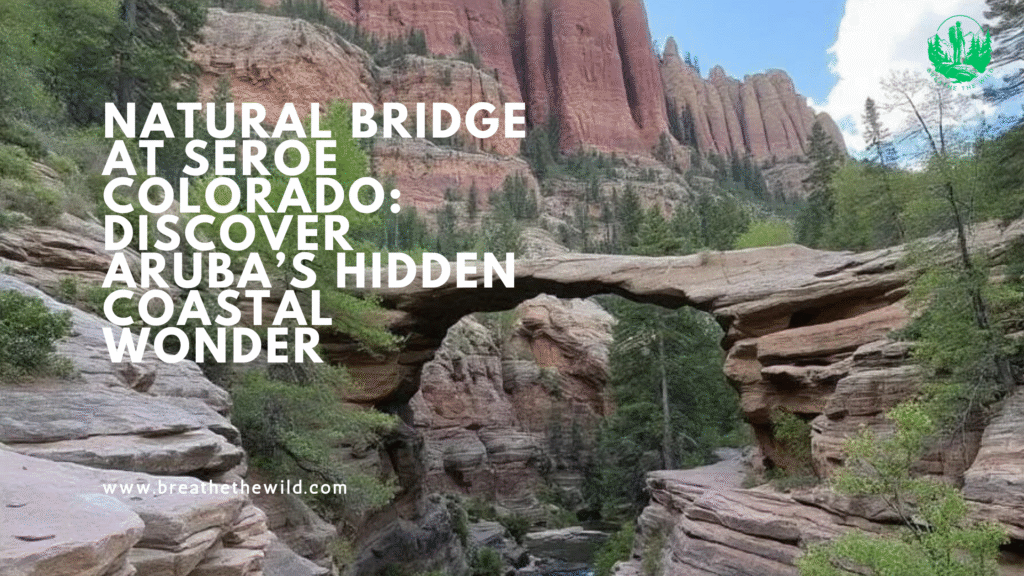Table of Contents
Introduction: Discover the Hidden Gem of the Otter Falls Trail
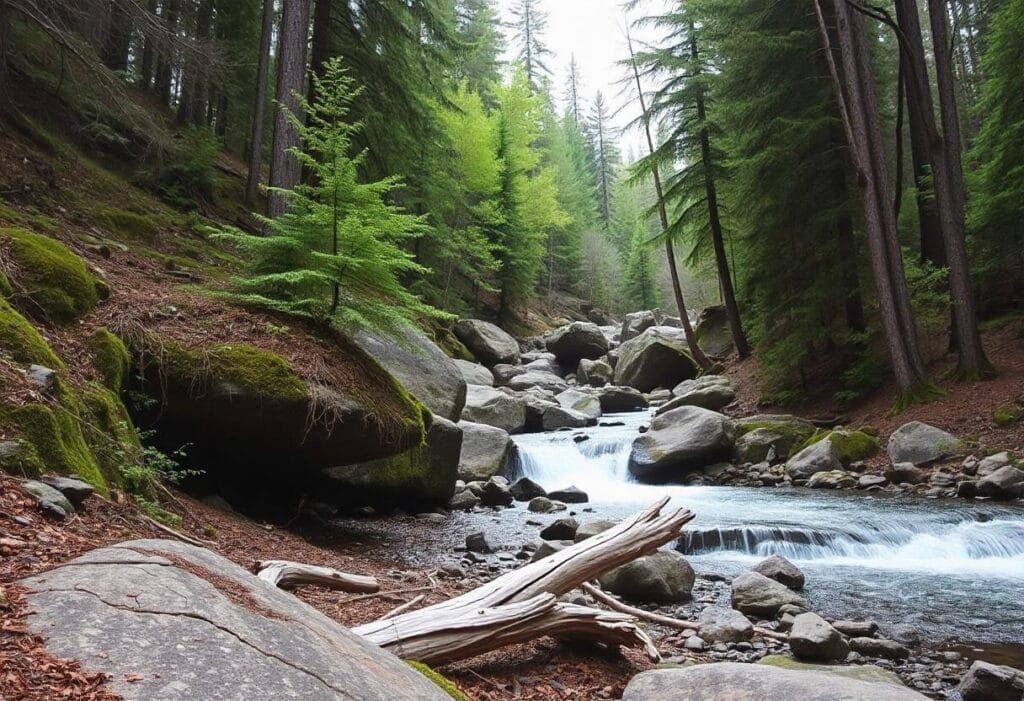
Buried deep in the lush green wilds of the state of Washington, the Otter Falls Trail is the kind of secret world that hikers can only dream of as they spend time in nature. It is a nice walk on the wild side through cascading waterfalls, old forest growth, and the tranquil serenity of Lipsy Lake, a great getaway out of the normal everyday world that is only a small drive outside of Seattle.
Whether you are just a weekend wanderer or a diehard backcountry traveler, the Otter Falls Trail may take you off the beaten path and into the unbeaten and uncropped nature of the Pacific Northwest. The trip to the falls meanders around the Taylor River, with mossy trees, old bridges, and the type of scenery that simply causes you to pull over–camera in pocket, lungs full of fresh mountain air.
In this guide, we will illustrate to you everything you need to know to enjoy your perfect day on the trail. Whether it is what to bring and the right time to visit, or how to get to the falls and take the best photographs, this is the one-stop shop to literally and figuratively get to the new heights of Otter Falls Trail.
Where Nature Roars: The Scenic Wonders of the Otter Falls Trail
Otter Falls is a piece of wilderness beauty with every footstep taking you deeper and deeper into the water, rocks, and time designed world. When hiking along the Taylor River, the sky is covered with giant fir trees that encompass it like a cathedral roof, and the sound of water flowing down can be heard around much of the trail. The landscape turns out to be the ravishing one as there are lush green ferns that cover the forest floors with mossy rocks and mountains that keep sight of you in the distance.
Otter Falls is also fan shaped waterfall representing a breathtaking phenomenon of the trail and plunges over a granite wall into a calm, easily reflective water of Lipsy Lake. This juxtaposition of the raging power of the waterfalls and the still lake is simply mesmerizing, particularly in springtime when the cascade is as powerful as it can get due to snow melt.
There are also several species of wildlife that hikers may come across on their side, these can birds singing in the trees, to animals, such as deer, which can quietly graze in the distance. Raccoons, banana slugs, and a chipmunk are among the first things you notice, and a bald eagle soaring overhead is easy to see. This national park turned out to be a dreamland for nature lovers and nature photographers because of the variety of biodiversity, cool and non-crowded trail settings. When you are in need of a patthatch will bring you just as much seclusion as grandeur, you are at the right spot.
Trail Overview: What to Expect on Your Otter Falls Journey
Otter Falls is a hiking trail located within the system of Taylor River on the boundary of Mt Baker Baker-Snoqualmie National Forest. It is an accessible point-to-point trail, about 8 miles round-trip, and a 400 ft elevation gain. The path is dry and relatively easy in nature, which may be accessible to most of the hikers who have average fitness levels.
Your hike will start along the wide, gravel Taylor River Trail, with you then joining a side path to the Otter Falls and Lipsy Lake off the beaten track. The trail is not very steep, but in places it may be steepish, muddy, or have ravines that are crossed over by small streamlets–particularly in the wet season.
Some of the highlights that one should look forward to are:
- Taylor River Valley: the ever-present views of the river and small cascades here and there
- Lipsy Lake is a still alpine lake reflecting the sky
- Otter Falls. The prime attraction is a majestic and distinctive waterfall inaccessible through any means other than on foot.
The part is ideal to hike in half a day and get the most beauty and the least crowds.
Best Time to Visit: Seasonal Tips for the Otter Falls Trail
Visiting at the right time of year can be of great benefit to you when you are on the Otter Falls Trail. The season brings about something new; the decision should be based on what you want to see and what to avoid.
The best time to come is arguably in spring, i.e., April to June. Close by mountains are the sources of the waterfall known as the Snowmelt; thus, the Otter Falls thunders. It can also be in the spring when the wildflowers are in bloom and the trail is green–only the patches are likely to have been muddy and the stream full.
In summer ( July to September), it is dry and warmer, making the trail more walkable and predisposed for someone who just wants to do a hike. The waterfall may not be quite this spectacular all the time, as there is less runoff, so book your hikes early in summer in case you want it in full flow.
In fall (October through early November), the forest becomes an artist’s colour chart of golds and reds. It is less noisy and has new weather with clean air and fewer people hiking in the region, hence it is the best time to take some photos. Be careful of fewer days and early snows in the snow at higher elevations
Only in December through April, winter is recommended, in case you are an experienced hiker and own all the equipment needed to travel the mountains during winter and to find your way around a snowy landscape. Access roads can be closed by snow and ice.
Late spring, at the start of the summer, presents itself as the easiest way to find the best views of the waterfalls and the trail.
Check Out: Namib Naukluft Adventures: Your Ultimate Guide to Epic Desert Hikes.
Hiking Prepared: What to Bring and Know Before You Go
Although the Otter Falls Trail is not really extreme, it still requires preparation in order to have a safe and satisfying hike.
Gear Checklist:
- Hiking boots with proper traction that are probably waterproof adequate supply of clean drinking water, or a filtration system
- Layers depending on the weather (it is cold at the lake shore)
- Navigational tools: GPS app, trail map, or offline map
- Trekking poles (with which they can help on stony sections and crossings of streams)
Safety Tips:
- Look out for slick rocks in stream crossings and around Lipsy Lake
- Look out for animals and do not give them anything to eat
- Tell someone what you are doing before leaving, and do so at all times, but more so, when you are hiking alone
- Poor cell reception- map your directions and directions before arriving
Particular relevance here is are Leave No Trace Principles. Carry everything you carry out, use marked trails to avoid fragile ecosystems, and remember that other people want to share this silent place with you.
Once equipped with the right equipment and mind ready, the Otter Falls Trail is not just a hike anymore, but an emotional experience into the wildcore of the Pacific Northwest.
For All Skill Levels: Why Otter Falls Trail is a Crowd-Pleaser
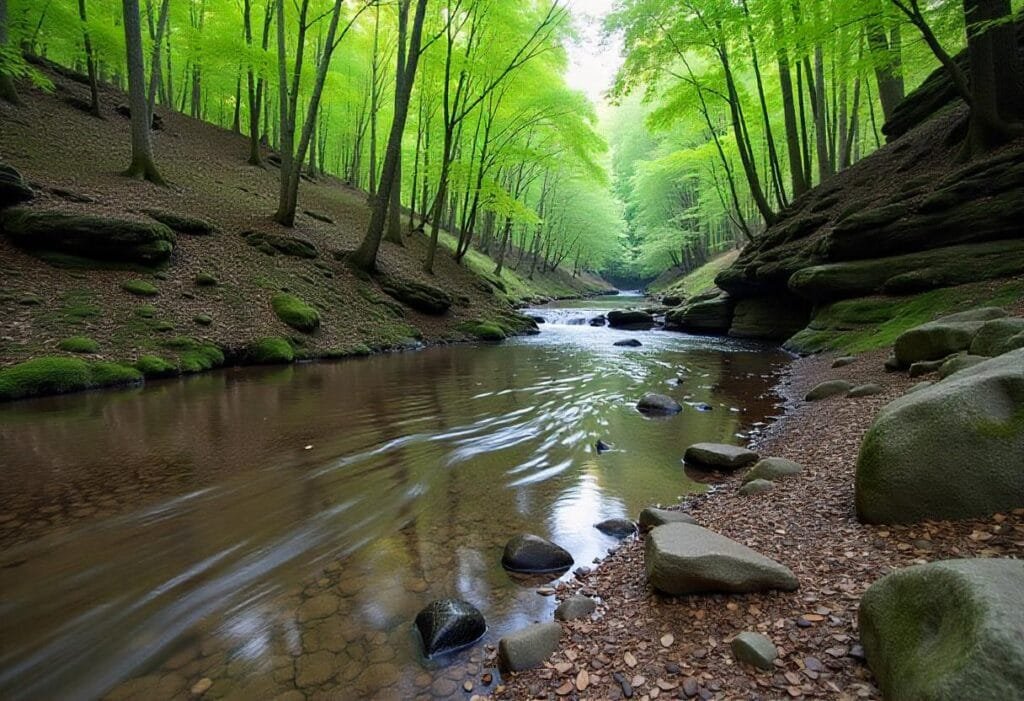
The accessibility of the Otter Falls Trail is one of its biggest attractions. Regardless of whether you are an experienced hiker, a family in need of an outdoor nature-packed weekend adventure, or a couple trying to get out of town on a beautiful scenic trip, this hike has something to please everyone.
The trail has the right distance without being too long and the right elevation gain that is not too much. Amateurs of hiking like the fact that the path is wide and well-prepared; meanwhile, those who have more experience enjoy the comfortable starting place and the possibility to get to the smaller side paths.
The flat areas and the forested landscape of the hike provide entertainment and space to roam on their own for families with kids. Only that safety should be kept in mind when it comes to water crossings and the rocky terrain around Lipsy Lake, to watch the little ones. It is pet-friendly; however, dogs can be brought on-leash only, and would-be adventurers will not face problems with carrying out waste and controlling pets around wildlife.
Once you want to hike more, branch left to check other portions of the Taylor River Trail or head northward on unofficial spur trails to find more miles and quiet. Hiking for two or six hours, Otter Falls will greet you where you are.
Capture the Moment: Photography Tips for the Otter Falls Trail
The Otter Falls Trail is an outdoor photographer’s dream, with dramatic light, rich textures, and that waterfall shot that relatively few others have taken.
Otter Falls Look your best as morning progresses through the midway to late afternoon, as the sun is allowed to shine through the trees and glorify the granite wall behind the falls. Can you see the light is soft and moody, and a cloudy day offers great even light-particularly when photographing moving water.
Best gear to bring includes:
- A wide-angle lens to show the full height of the falls as well as the lake around it
- A long-exposure waterfall tripod
- A polarization filter to cut down water glare
- A lightweight dry bag to cover the gear in case crossing a stream is necessary
And don’t forget Leave No Trace photography, which means not trampling down sensitive vegetation to capture that shot or to get near wildlife to take a picture. It is not necessary to disrupt in order to take a great photograph; instead, only patience and presence are required.
Getting There: Directions, Parking, and Permits
Reaching the Otter Falls Trailhead is relatively straightforward. The trail begins off Forest Road 5620, near the Taylor River Trailhead in the Mt. Baker-Snoqualmie National Forest, roughly 60–70 miles east of Seattle.
Directions:
- Take I-90 east toward North Bend
- At 34 get off and proceed eastwards on 468th Ave SE
- Turn right onto SE Middle Fork Road, an unpaved dirt road that becomes Forest Road 56
- Go on to Taylor River Trailhead parking (gravel, very limited)
Parking Tips:
- Come in early on weekends-they get packed by the end of the omorningThere are no facilities at the trailhead, and pack them in.
- No parking fees are charged; however Northwest Forest Pass or America the Beautiful Pass is required and must be visible in your vehicle.
Always confirm road and trail conditions before coming to play, at least until late fall in early spring, when snow or washouts can limit access.
Nearby Attractions to Extend Your Adventure
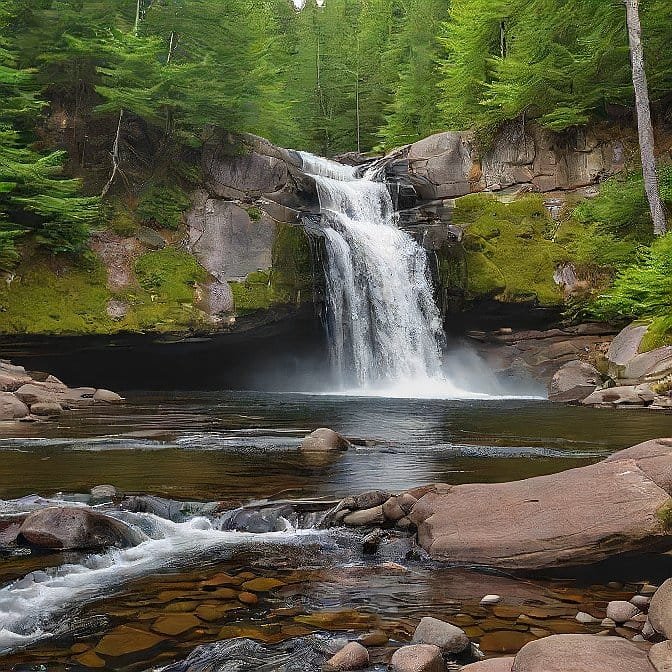
Should the Otter Falls Trail leave a person wanting to do more (and it most likely will), one can find enough reasons to do so in the surrounding area.
Other trails in the area:
- Snoqualmie Lake Trail is an extended trail, past Otter Falls/day hike
- Middle Fork Trail-a longer, scenic trail further in the wilderness
- Lennox Creek Trail – has a strenuous set of terrain and fewer people
Want a more leisurely hike afterward? Drive scenically along the Middle Fork Snoqualmie River or stay in the next campgrounds in the Tinkham Campground or Denny Creek Campground (dependent on season) to enjoy wonderful views.
In need of gas? Return to North Bend to have a good meal, a coffee, or even a craft beer. It is a small town that is cordial and has a number of cafes and restaurants that have passed the test of hikers.
Conclusion: Let the Otter Falls Trail Elevate Your Next Adventure
Whether you want to relax, take in the views, or just get some heart-pumping hiking in, the Otter Falls Trail will take you fully immersed within nature in the state of Washington. Cascades, peaceful lake, moss-covered forests make this trail one of the examples when you do not have to conquer a mountain to feel that you are on top of the world. Whether it be hikes with family or a personal nature medicine, this is a path that takes little and gives much, silence, breathtaking panoramas, and a renewed sense of how beautiful the Pacific Northwest is.
Here is how you go about doing that: put on your boots, pull out the camera, and go sightseeing at this secret treasure. One step closer, one step further to your next favorite trail, one that is quiet, strong, and wild enough to make you feel inspired.
For more info: Click Here.
FAQs
1. What is the duration of the hiking trail to Otter Falls?
The round-trip distance is 8 miles, which most hikers can finish within 4 to 5 hours, depending on the pace and prevailing conditions on the trail. Account for additional time, in case you are more of a pause to take photographs, visit an unmarked side trail.
2. Can I bring my Dawg on the Otter Falls Trail?
Dogs are alright; however, they have to be on-leash. Avoid pets around stream crossings and sensitive habitats, and be equipped to pick up after your pet to avoid littering.
3. Does the Otter Fallstrail have kids?
Absolutely. It is not a very long trail; however, the rather smooth terrain is what makes it appropriate even to very active children. Simply pay attention around the lake and the water fall, as it can be a bit slippery there, and carry snacks, water, and additional layers in case you feel cold.

